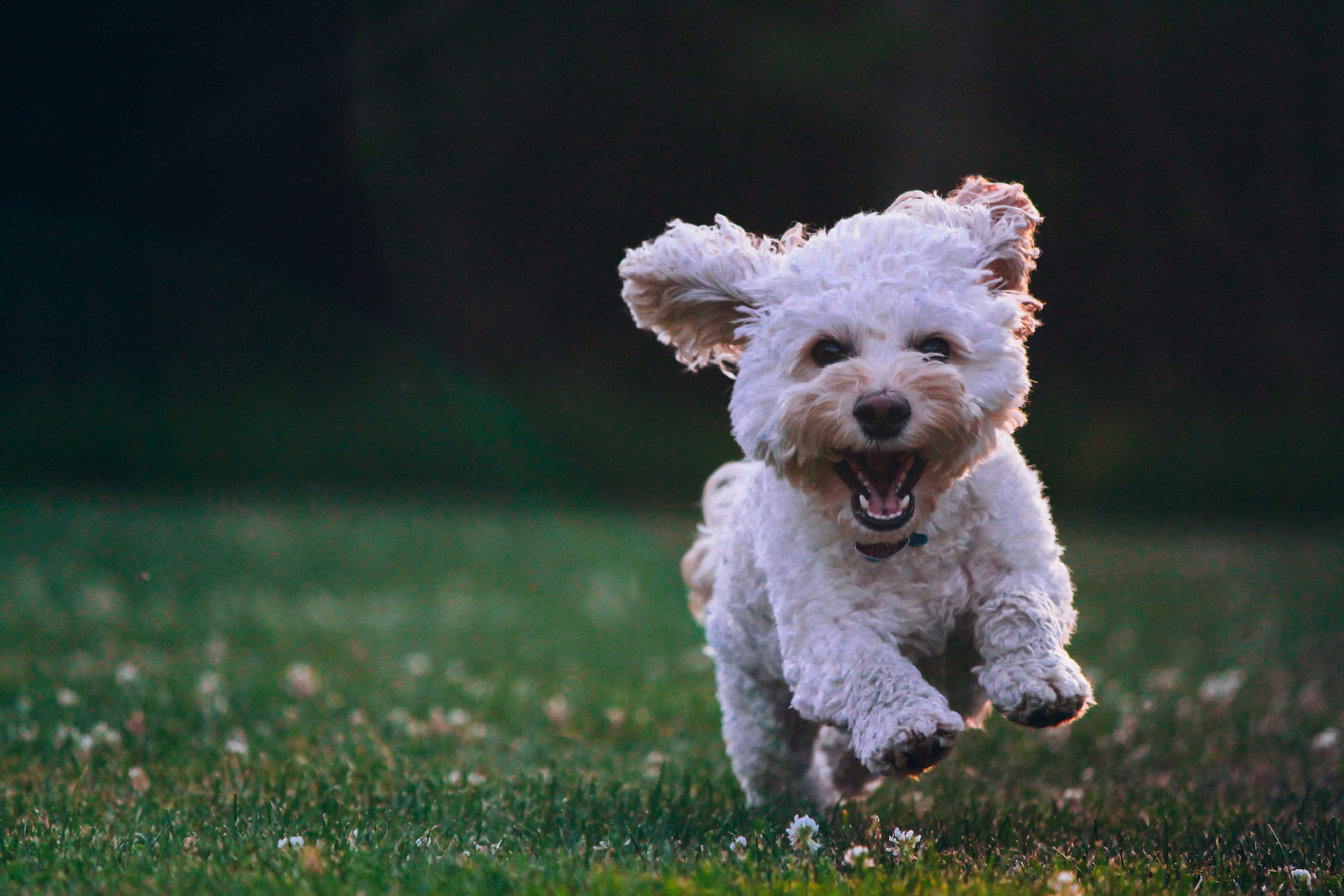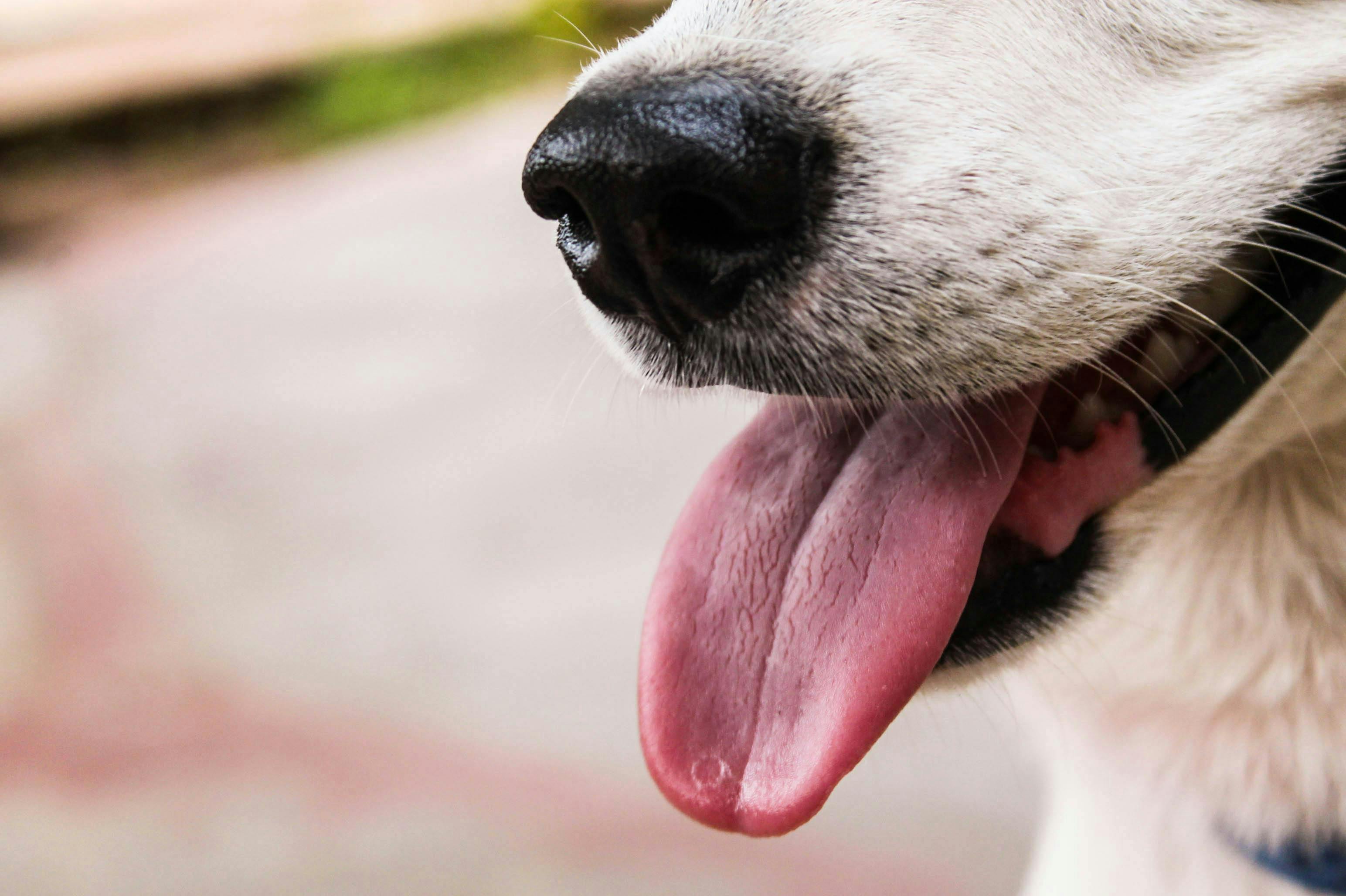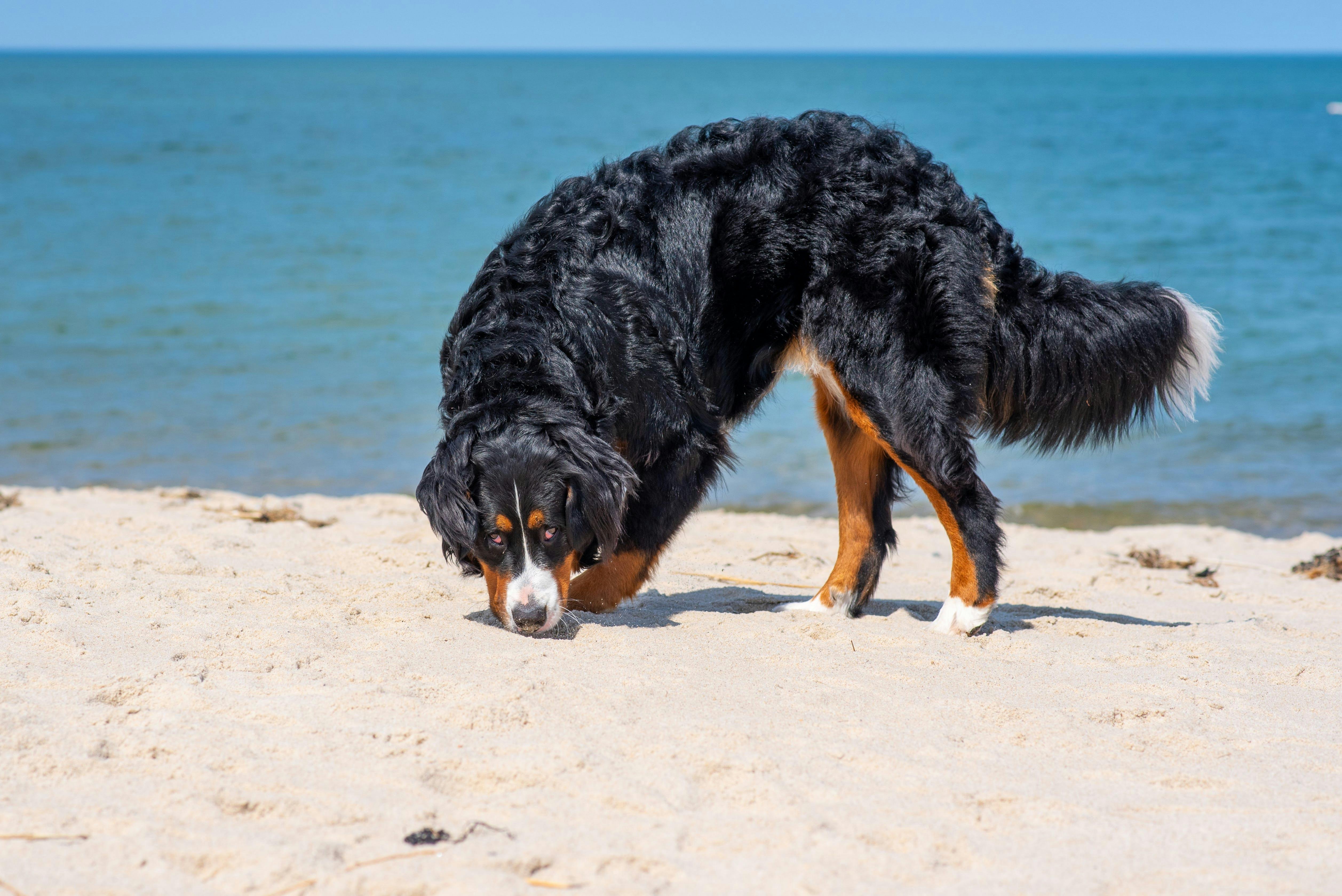How to Mat Train Your Dog (and Why You Should!)
Training tips | By: Taylor Wyllie, KPA CTP | Feb 24, 2023


Unlock 10 Expert Puppy Training Tips!
Sign up with your email and receive a free video guide to transform your puppy into a well-behaved companion
Mat training is one of the most underrated behaviors to teach dogs. It's not something that many people think of when they think of basic obedience. But it's one of my absolute favorite behaviors to teach—and I consider it one of the essentials, along with sit, down, and leave-it.
I teach mat training to puppies, shelter dogs, private clients of all ages and temperaments, and, of course, my own dog.
Before we get into why mat training is oh-so-important, let's all get on the same page about what it is.
What is Mat Training?
In the simplest terms, mat training teaches your dog to lie down on a mat when you say to and stay there until you've released them.
Let's break that down even further.
Once your dog has been mat trained:
- You can cue your dog to "go to mat" and they seek out their mat in the environment, go to it, and plop down
- They stay on their mat, relaxed and still until you ask them for another behavior or release them with a release word (like "okay" or "release")
While it's fairly simple and straightforward to teach your dog the first part—laying down on a mat on cue—the second is far more complex. (Don't worry, I'll walk you through it!)
It takes time for your dog to understand that their mat is a safe, relaxing place and to build duration.
Once your dog has these two steps down, you can use the mat to help facilitate relaxation and alleviate uncertainty with games like Leslie McDevitt's Look At That.
The Benefits of Dog Mat Training
There are so many reasons to mat train!
Mat training can...
- Help facilitate a state of relaxation (if your dog gets over-excited, aroused, or fearful and needs help coming down from that)
- Give your dog an alternative, incompatible behavior to attention-seeking behaviors like begging at the dinner table, jumping on guests, or chewing on your slippers
- Make your dog feel comfortable in new environments. Once your dog has associated that feeling of safety and relaxation with their mat, you can bring it to dog training classes, hotel rooms, breweries, friends' houses, and more to help facilitate comfort
-
When your dog is comfortable in new environments, they are much more likely to be attuned to you and able to listen to cues
In this video, my anxious dog is able to relax on his mat while we move into a new house (something that has made him incredibly anxious in the past). This wouldn't have happened before mat training.
-
- Ease reactive behaviors by ensuring that your dog understands that the mat is a safe zone (nothing can happen to them there) and incorporating pattern games, which I'll discuss more below
How to Train Your Dog to Go to Their Mat
While there's a generic "recipe" to teach mat training, different dogs have different strengths and weaknesses when it comes to learning how to calmly go to and stay on their mat. Plus, different dogs work through the steps at different paces. Meaning, you'll have to tweak the process for your own dog.
To show you the process in "real life," I've included videos showing two shelter dogs learning this "go to your mat" behavior. You'll see that while I more-or-less follow the same "recipe," the number of tablespoons and seasonings look different. Note that both shelter dogs went into foster or were adopted before the full behavior was trained. You'll see the last few steps with my own dog.
Before every new step, warm up with a few repetitions of where your dog was last successful.
Before we get into training, let's discuss what mat you should use in the training process.
What Kind of Mat Should You Use for Training?
You can use a pillowcase, towel, dog bed (as long as it's not your dog's actual bed), blanket, bath mat, or specific dog mat, such as Mutt Matts.
My favorite mats are bath mats with slip-free bottoms, so your dog doesn't slip around when they plop down on the mat.
You want to make sure the mat you choose is comfortable and big enough for your dog. Some dogs prefer thicker mats. For example, my dog did not enjoy this behavior when we initially trained it on a pillowcase. Once we switched to a Mutt Mat, he began to love it.
Ensure that you're not using your dog's actual bed as their mat. Their bed is a place they can choose to go to and leave at any time, while their mat is a special place they go to on cue and stay on until released. See the difference?
Step One:
While your dog is nearby, hold the mat and act extremely interested in it, like you're holding the original copy of Van Gogh's Starry Night.
Set the mat on the floor near your dog. Mark—that is say "yes" or click—any sign of interest your dog shows in the mat, perhaps a glance, sniff, or paw touch. Every dog will respond differently.
Repeat—mark and reinforce any interaction with the mat. Some dogs will start to offer behaviors at this point, like sitting on the mat. I suggest still marking and reinforcing any interaction with the mat, giving a higher-value treat for offered sits.
Stop after 2-5 minutes of training—and reward your dog for a job well done with a treat scatter or play session.
Step Two:
Instead of marking any ole interaction with the mat, now you can start to be a little pickier.
You're trying to work your way up to your dog offering a down. It may look something like this:
- Mark and reinforce when your dog sniffs the mat
- Mark and reinforce when your dog puts a paw on the mat
- Mark and reinforce when your dog puts two paws on the mat
- Mark and reinforce when your dog puts all four paws on the mat
- Mark and reinforce when your dog sits on the mat
- Mark and reinforce when your dog lowers his chin while sitting
- Mark and reinforce when your dog lays down
Work your way through the above steps slowly, pushing your dog but never setting them up to fail. Move on to the next step when your dog can do the previous step consistently.
All dogs are different and some may fly through the steps, while others may need you to break it down even more. You'll see in the video, one of the dogs went from sniffing the mat to sitting on the mat to laying down. Another one required to be marked for head dips before he offered a down.
You can toss the treat off the mat to "reset" your dog in between repetitions. This makes your dog go through the entire process of going to the mat and offering the behavior again.
You can also feed your dog on the mat for staying in position. I like to do a combination of both, which you'll see me do with the shelter dogs in this video.
Step Three:
Now, you only mark and reinforce when your dog is in a down position.
You can continue to alternate where you deliver the treat to your dog.
You can reinforce your dog on the mat while they stay in a down. Make sure you're not jumping too far ahead and requiring your dog to stay for any notable duration, one or two seconds is all that's required.
You can also toss the treat away, requiring your dog to return to their mat and lie down.
It's best to stick to one reinforcement technique per short training session with a break in-between. Although, I will sometimes mix it up within a training session.
You can also start to move your body around, so it won't become attached to the eventual cue. This would look like tossing the treat and, as your dog is eating it, moving slightly by taking one step to the right or back. This is so your dog doesn't learn only to go to their mat while you're standing right in front of it.
At the end of the session, release your dog from their mat by saying "okay" or another release word like "release" and encouraging them to come off their mat.
At this stage, I tend to work in shorter sessions, releasing after about a minute or two.
You will likely have to do lots of sessions staying at this step.
Step Four
Now it's time to make it slightly more difficult by positioning yourself further away from the mat.
Reinforce your dog on their mat for staying in a down and then release your dog with your release word.
When your dog leaves the mat upon hearing their release word, take a step back and give them a treat. (If need be, you can still encourage your dog to leave the mat upon hearing the word.) Then wait. Your dog will likely go back to their mat, so they can earn more treats.
Mark and reinforce your dog 3-5 times for staying down on the mat.
Release them again, repeating the pattern a few times.
It will look like this:
- Dog in a down on the mat
- 2-5 treats in place
- Release
- Wait for dog to return to mat
- Mark and reinforce returning to mat
- 2-5 treats in place
- Repeat
Slowly, stand further and further away from the mat when you say your release word until your dog has to walk across a room from you to their mat.
It is really easy to go too quickly here. Remember, to make it easy for your dog and set them up for success.
Even as a professional trainer, I sometimes take this step too fast by moving too far away from the mat. But you should start by increasing your distance from the mat by one step or even half a step and work your way up from there.
If your dog is having trouble, backtrack and stand closer to the mat. Slowly work your way back up.
Gradually increase your distance from the mat, until your dog can lie down on it even when you're across the room.
Step Five
Now you can add the cue.
Say your cue—for example, "place"—just before your dog goes to their mat and lies down. This tends to be right when your dog is finishing their treat and about to go seek the mat out again.
Incorporating Distractions and Duration in Mat Training
I usually ping-pong between steps six through eight when training dogs, working on distractions, duration, and even bigger distractions simultaneously. I broke them into individual steps for clarity.
Keep in mind, it's important to be clear on what you're working on within each training session. If you're not clear then your dog may be confused about what you want.
Step Six
Fold in small distractions. Start by cueing your dog to go to their mat. While they are on their mat, move your body around (which can be very distracting to dogs).
If they stay in a down, mark and reinforce, feeding them on their mat to encourage them to stay in that down position.
Try body movements like:
- Bending your knees
- Touching your toes
- Reaching your hands up high
- Taking small steps around your dog
- Clapping your hands
- Squatting
- Jumping jacks
You want your dog to know that no matter what you're doing they should stay on their mat.
At the end of the session, tell them their release word to let them know they're all done.
Step Seven
It's time to add duration. Instead of marking as soon as your dog lays down, delay a couple of seconds. Slowly, one or two seconds at a time, increase the duration your dog has to stay on the mat before they earn their reinforcement.
Step Eight
Add even bigger distractions and longer duration.
For example, cue your dog to go to their mat.
Then:
- Squeak a toy
- Wait 30 seconds
- Have a helper come say hi to you
- Wait 5 seconds
- Knock on a door
- Wait 15 seconds
- Hold a smelly treat
- Wait 2 seconds
- Release your dog
Slowly build to longer duration and bigger distractions!
Be aware that working in the face of distractions is a difficult skill and takes time to slowly build. Some dogs will struggle with it more than others. Be patient and work at your dog's pace.
If your dog can't handle a specific distraction, that's okay. Simply break down that distraction into less distracting parts—for example, start by holding a toy instead of squeaking it.
Also, it's a good idea to throw in some easy wins too, as shown in the example session above.
At the end of the session, tell them their release word.
If you want a very systematic way to add distractions to mat training, try Dr. Karen Overall's Relaxation Protocol.
Step Nine
Put it all together. In the face of a distraction, give your dog their go-to place cue. If they go to their mat and plop down, mark and reinforce.
Examples of what this may look like:
- You're talking with a family member. Pause the conversation and ask your dog to go to their mat. Mark and reinforce. Continue talking. Mark and reinforce your dog for staying. Continue talking. Tell your dog their release word and toss them a treat.
- You have a friend knock on the door. Ask your dog to go to their mat. Mark and reinforce. Open the door. Mark and reinforce your dog for staying. Your friend comes in. Mark and reinforce by saying their release word and letting your dog greet your friend (if they want to!).
- You are cooking dinner and it smells so delicious to your dog. Ask them to go to their mat. Mark and reinforce. Continue to cook, as you do intermittently mark and reinforce your dog for staying. After a few minutes, release with your release word.
Slowly, go longer between reinforcements.
But, remember, this isn't a race. You want your dog to really love going to their mat and staying there, so you can use it in all the situations mentioned at the beginning of this article. If you push your dog too fast too quickly the mat behavior won't be as useful!










